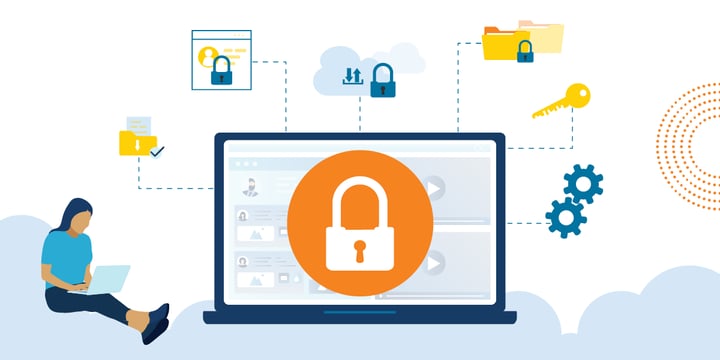Safeguarding the sensitive data of members, donors, and volunteers is critical for nonprofit organizations. Yet, the rise of digital transformation and remote work has created new cybersecurity challenges — and IT budgets often don't keep pace.
To maximize cybersecurity while keeping overhead ratios low and operations lean, nonprofits need to understand the top cybersecurity challenges they're facing and how to address them cost-effectively.

Top 3 Cybersecurity Challenges at Nonprofits
The nonprofit sector faces a variety of cybersecurity challenges, but here are three of the most common:
- Compromised logins on the dark web: The dark web is an anonymous part of the Internet with information that normal search engines can't process and organize. Cybercriminals buy and sell stolen usernames and passwords on the dark web every day, which are then used in a variety of cyberattacks. Nonprofits are a popular target because they often have limited cybersecurity resources and store lots of personal and financial information.
- Ransomware: Ransomware occurs when cybercriminals get access to sensitive data and threaten to publish or block access to it unless a person or organization pays a ransom. Nearly a third of surveyed managed security service providers globally said nonprofits are the most susceptible to ransomware (PDF).
- Social engineering attacks: Cybercriminals use social engineering techniques like phishing to trick people into sharing sensitive information. For example, they might send one of your employees a message pretending to be from your organization, asking them to click a link and reset their password. This allows the cybercriminal to collect their login information and deploy malware — software that interferes with a computer's normal functioning — to gain digital entry into your organization. Across all sectors, social engineering remains the main culprit behind data breaches, and phishing is the most common type of action involved.
How to Address Key Cybersecurity Challenges
Now that you understand the cybersecurity risks nonprofits commonly face, let's start securing your important accounts.
1. Take a Look at the Accounts Your Team Needs
If you're not using password management best practices, the more accounts your team has, the higher your security risk. Shared and reused logins, failure to change passwords regularly, and a lack of 2-factor authentication (2FA) all increase your security risks.
2. Understand How Your Logins Are Set Up and Used
Create a list of each online account, who has access to it, if it has 2FA set up, and if its password is used for any other accounts. This is a helpful starting point to understand your login ecosystem and identify potential password security weaknesses.
3. Review Password Management Solutions
Your team has a heavy workload, so you need simple and convenient tools that don't get in the way of staff workflows.
A password manager makes this easy by
- Filling in all your passwords across the web, on any device
- Generating long, strong, and unique passwords
- Saving logins as employees browse the Internet
- Autofilling usernames, passwords, and 2FA codes for every account
- Enabling secure sharing of passwords and 2FA codes (for example, for shared social accounts or onboarding purposes)
- Monitoring the dark web and notifying you if your organization's logins appear on it
- Enabling users to log in once to access multiple apps or platforms, known as single sign-on (SSO)
- Encrypting your data when you're online using a virtual private network (VPN) to protect it from cybercriminals
Your nonprofit faces many cybersecurity challenges. This is where a password manager like Dashlane comes in. It can secure your nonprofit's sensitive data for as little as $2 per person per month, so you don't have to.
Learn more about effective password management at nonprofits in the Password Playbook for Nonprofits mini-guide and start improving cybersecurity with a free Dashlane trial.
Additional Resources
- Resist social engineering with training from KnowBe4.
- See a webinar on Creating a Culture of Security.
- Get training from TechSoup Courses on cybersecurity and cyber liability insurance.
- Get 5 Tips for Protecting Employee Data.
Top photo: Shutterstock








